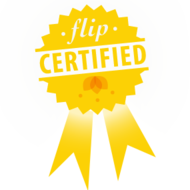Wordle is a website that takes text from any source and converts it into a visual representation of the text. It analyzes it and makes the size of the word as it appears in the "wordle" is proportional to the number of times it is used in the text. You can either copy and paste text from another source, or you can list the URL of a website or blog and create a wordle of that text.
First, Wordle will generate an image that features a randomly-selected combination of fonts and colors, but all of these things can be customized. Wordle is also smart enough to restrict frequently used words like "and" or "the" and just use more meaningful words and names from the text. Finally, once the wordle is generated, you can customize it and remove certain words.
Below are some examples of how teachers all over the country have used Wordle.
This student copied and pasted the entire text of the United States Constitution to create this wordle.
This Wordle uses a research paper on the history of Japan as its source material.
Instead of copying and pasting, you can also list a URL and the site will pull all of the text from that site. Just for fun, here is a wordle of my blog.
Back to business, we used wordles in our reading class this week and it was quite successful. We are half-way into Cornelia Funke's The Thief Lord, and the plot is really beginning to thicken, so I thought it was time to reflect on what we had already read to revisit the build up of suspense. Each student was assigned a chunk of pages from the past 25 chapters and reread it to refresh their memory.
Once they had reread the passage, students wrote a two-paragraph summary of the events in that section. We copied and pasted the text into Wordle and created images of the summaries. We printed the summaries and each student wrote their name on the back of the wordle.
Each student received a slip of paper with the names of each other student in the class. We silently passed the wordles around the room in a rotation and tried to pinpoint the exact moment in the story that the wordle described. As they came up with their guesses, they recorded them on the slip next to each students' name.
At the end of the activity, each student was invited to share their wordle with the class, then take their classmates' guesses about which scene they described. The students' guesses were mostly accurate, but we found that this was significantly more challenging than the similar guessing game we played with text-rendered poems earlier in the year.
All in all, it was a successful experience, and it also got the students used to the workings of Wordle. We can use this website in the future as a writing aid, for finding over-used words, a summarizing tool, for finding main ideas, and as a fun way to visualize text from all subjects.
I bet if I made a wordle of this post, the word "wordle" would be really big...











